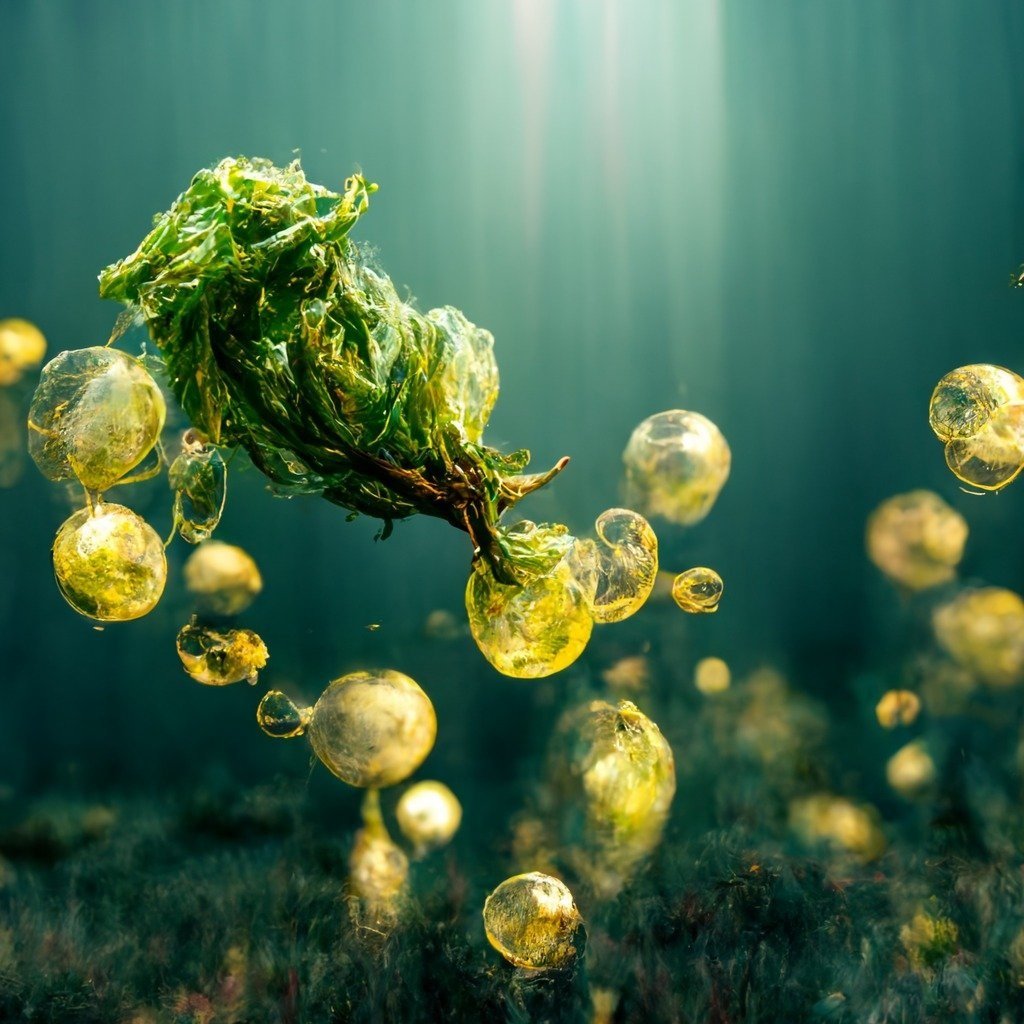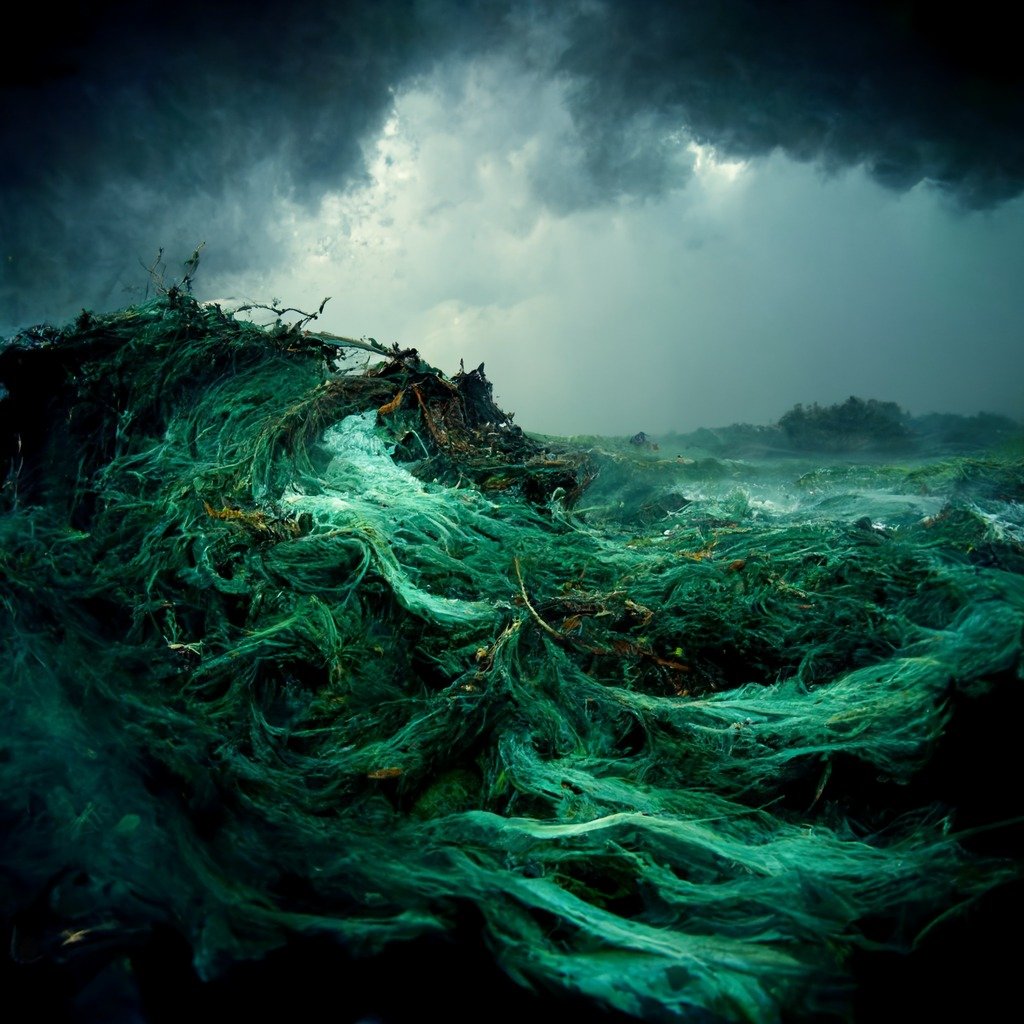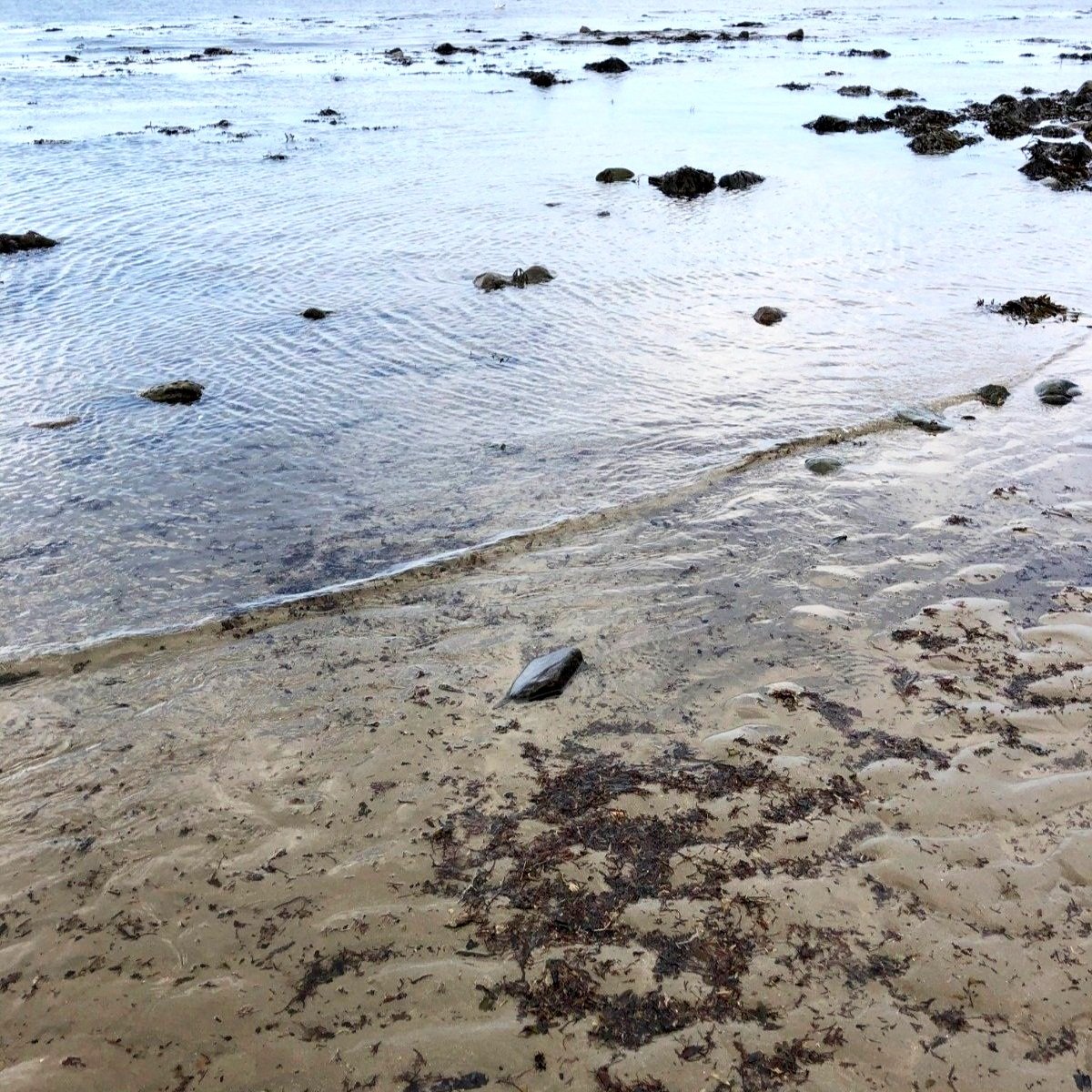Carbon sequestor
As seaweed disintegrates, it sinks to the ocean floor, taking with it the carbon stored in the algae
Fragments of seaweed float around in shallow sea in Borth
Just like plants on land, when seaweeds photosynthesise they absorb carbon dioxide and turn it into biomass.
Most of the carbon storage comes from bits of disintegrated seaweed washing down into the deep seabed while about 10% gets buried in coastal sediments nearby.
It's really hard to estimate the amount of carbon that wild seaweeds sequester (lock away) but one study estimates about 173 million tonnes of carbon a year for all the wild seaweed in the world. This is about the same amount of CO2 that is produced by all food waste in the EU (estimated at 170 million tonnes of CO2).
-
Here’s an interesting study looking at how seaweed farming helps to store carbon beneath the site: https://www.nature.com/articles/s41558-024-02238-1 and depending on what the harvested seaweed is used for, it can go on to save more carbon.
-
Other references:
https://www.nature.com/articles/ngeo2790?source=post_page
https://www.europarl.europa.eu/news/en/headlines/society/20170505STO73528/food-waste-the-problem-in-the-eu-in-numbers-infographic
https://www.frontiersin.org/articles/10.3389/fmars.2017.00100/full
More from this category




